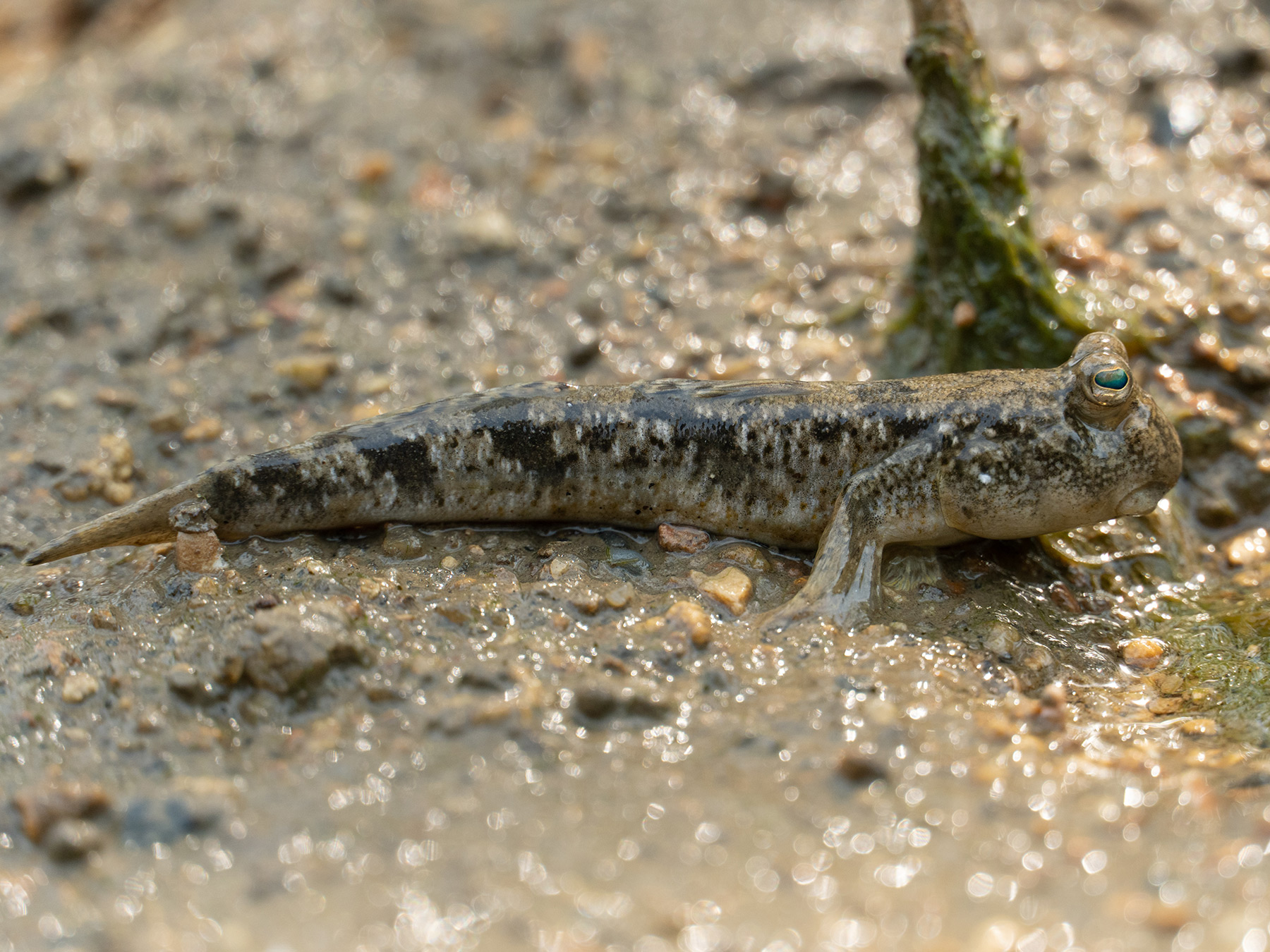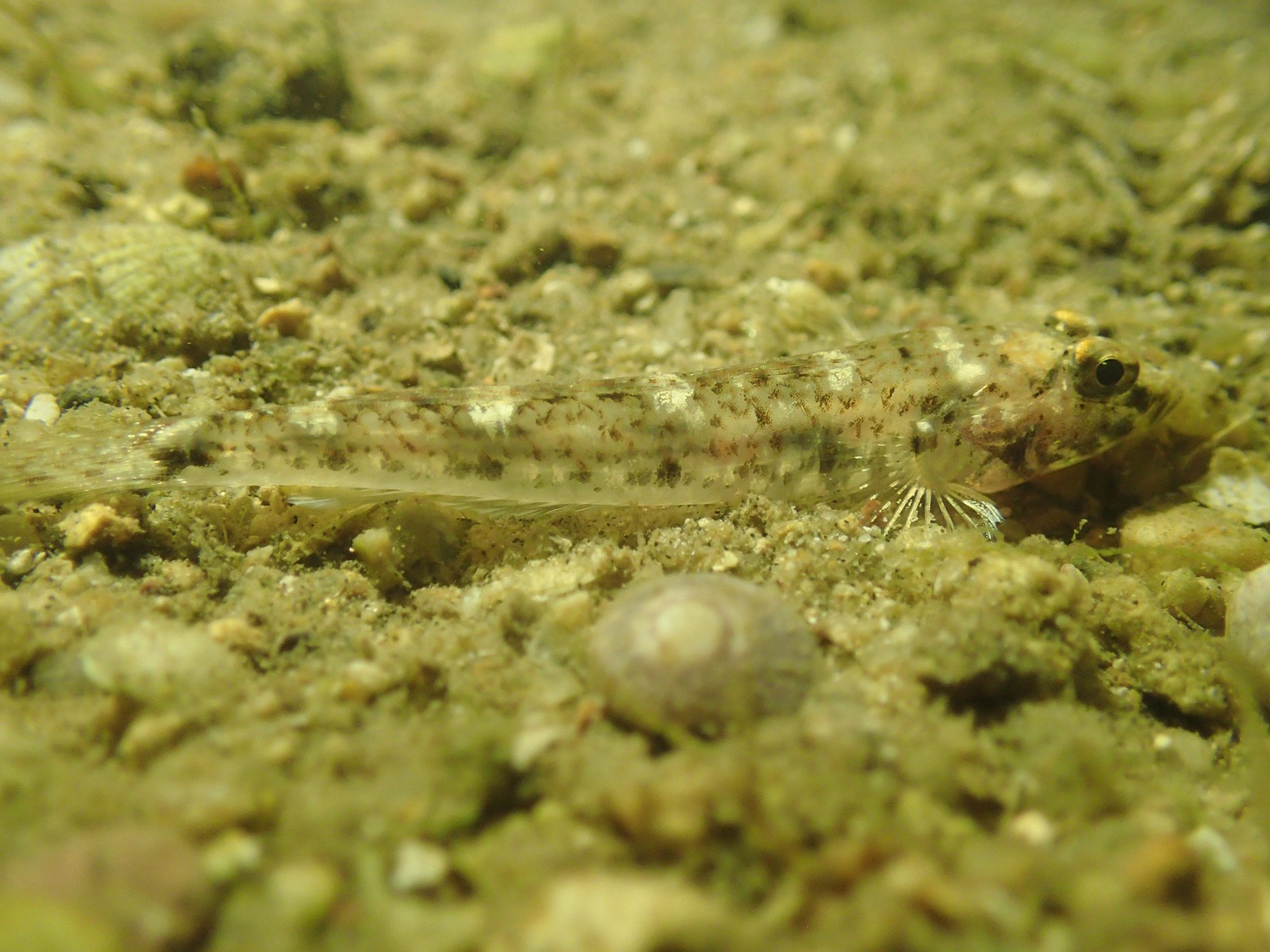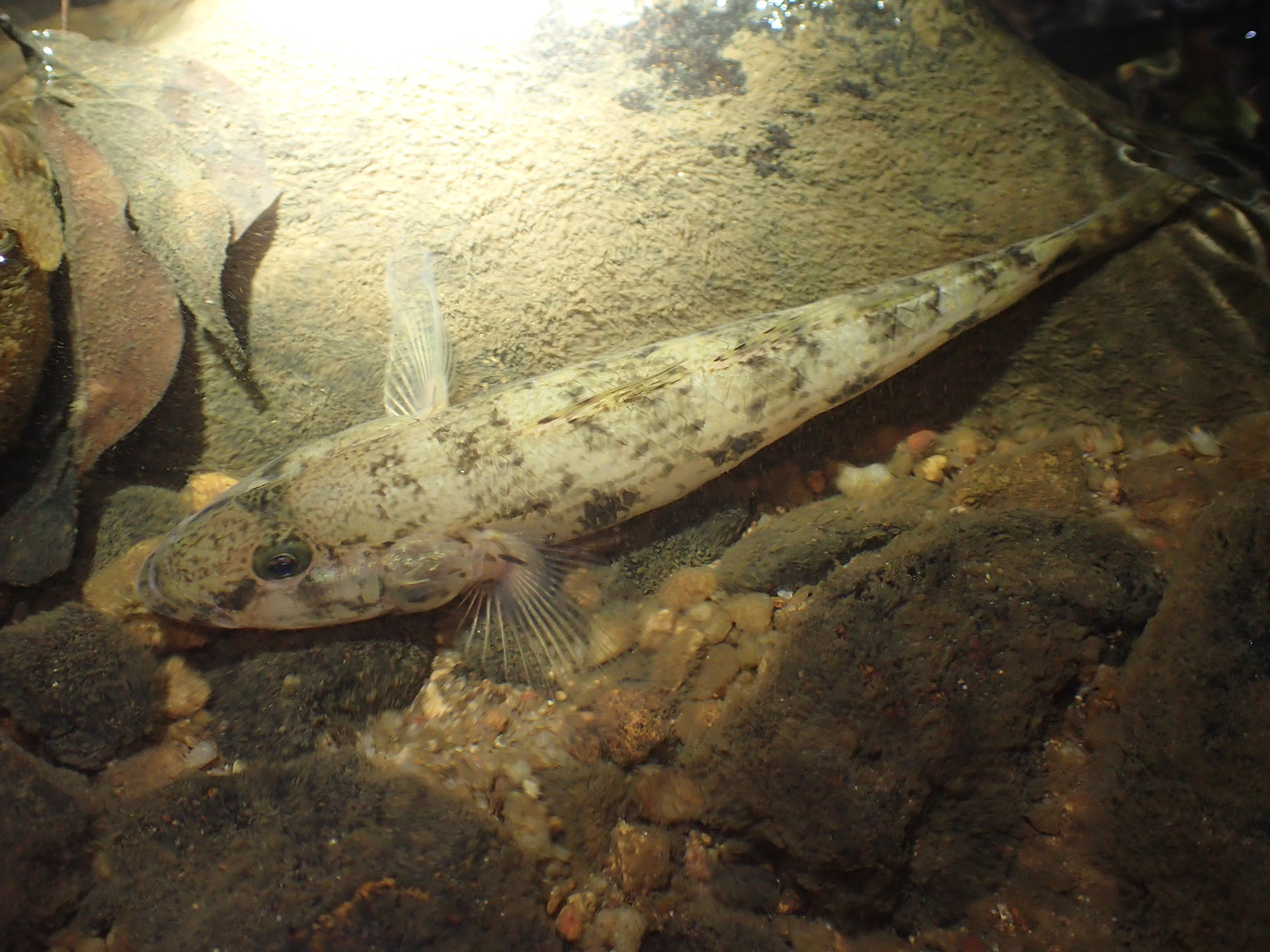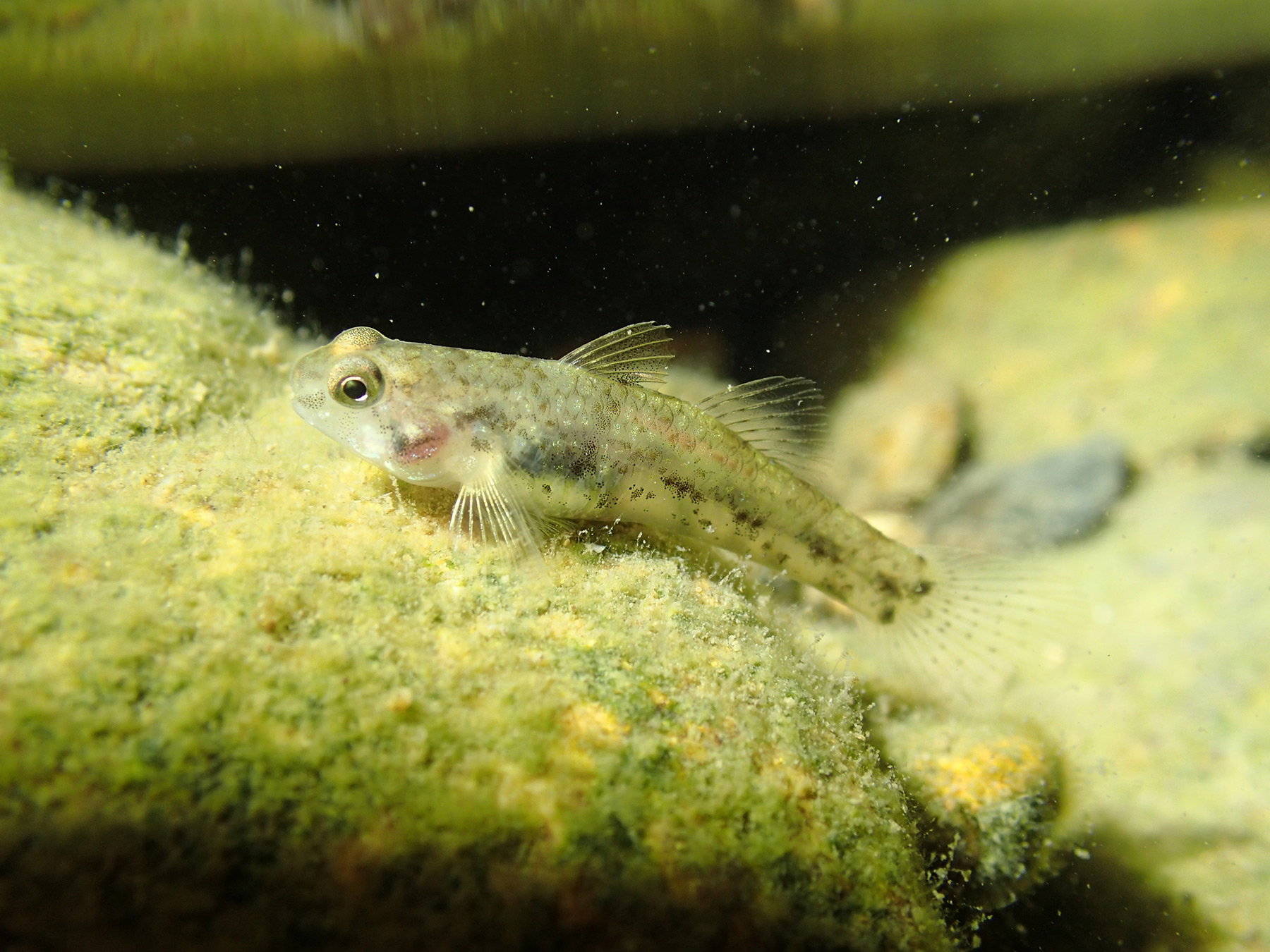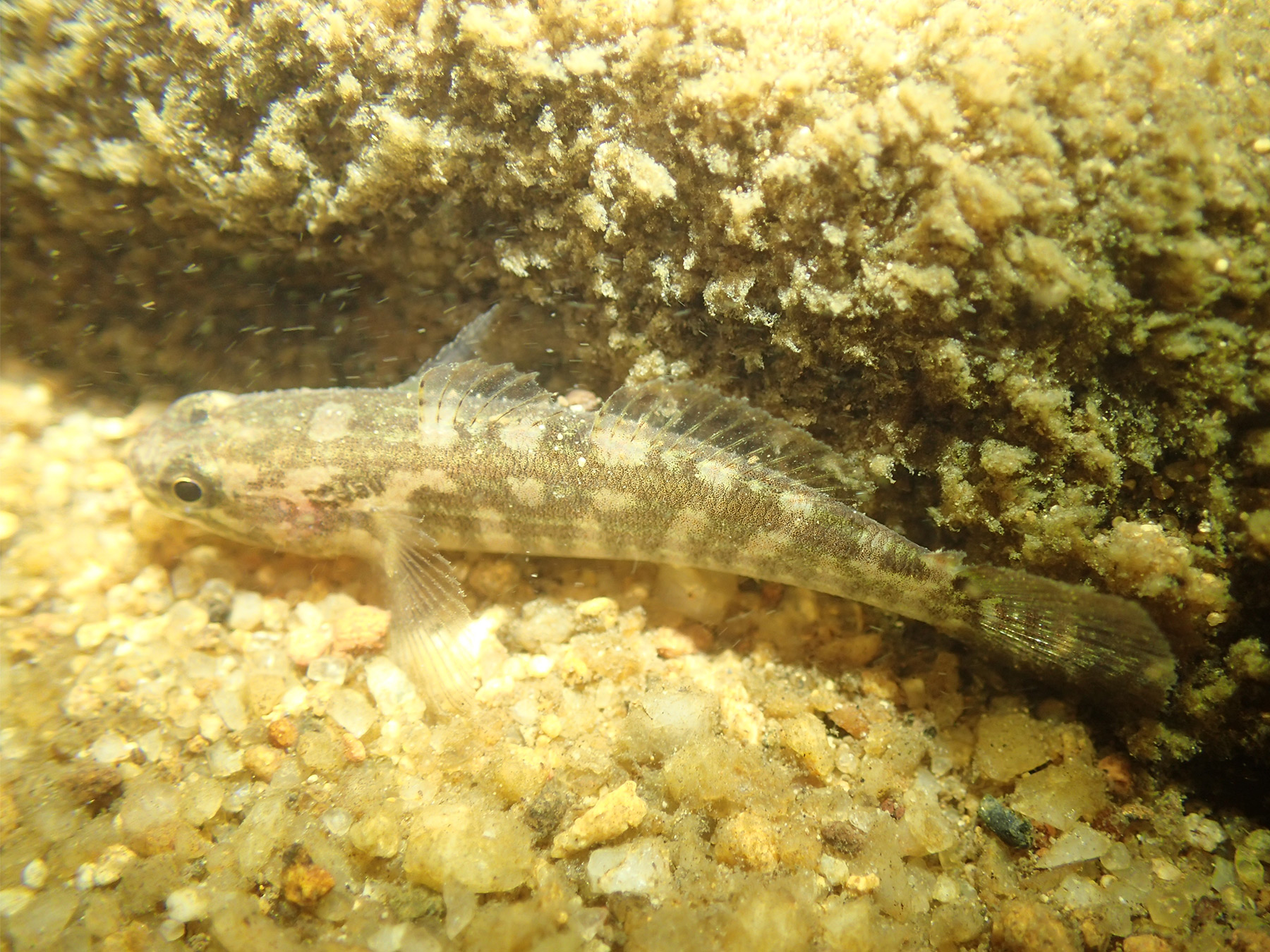"Goby" is the common name for a group of fish belonging to the Gobiidae family, a family as diverse as having more than 2,000 species around the world. To take a look at these cute fish, one may visit Shui Hau, one of the best locations for observing gobies in Hong Kong.
On the sandflat of Shui Hau, you may easily encounter mudskippers. As suggested by its common name, you can find them energetically shuffling or hopping on the moist sand all the time. Unlike most fish which can only live under water, mudskippers can survive on land as long as they keep their skin moist. The secret is that they can breathe in air through their skin like amphibians! The Shuttles Hoppfish (Periophthalmus modestus) is the most common mudskipper species crawling around in Shui Hau. Their bodies are 6-10 cm long and brownish-grey in colour. They have large protruding eyes that give them all-round views, rendering them difficult for predators to strike. Their mouths face downward to facilitate their feeding on the mud surface. With the aid of pectoral fins like crutches, they can crawl over mud. Mudskippers come out for feeding during low tide, filtering out tiny plants, animals and nutrients in sand/mud with their mouths for easy ingestion.
The Sharp-nosed Sand Goby (Favonigobius gymnauchen) is another common goby species in Shui Hau, yet you may not spot them easily. They prefer living in shallow waters with a sandy bottom. Their bodies have a maximum size of 9 cm, with excellent camouflage patterns allowing them to perfectly blend in with the sand. If you are lucky, you may spot them the moment they get scared and hide under the sand.
Sometimes, you may also see the Fork Tongue Goby (Glossogobius giuris) on the sandflat in small puddles. The Fork Tongue Goby has a compressed head with a protruded lower jaw. It is a large goby species with a maximum body length of 50 cm for those found in Tanzania (i.e. comparable in size with a puppy). What's more, it can bite! No worries here. The Fork Tongue Gobies in Hong Kong are much smaller, reaching no more than 20 cm in body length. They are generally found in deeper water in the sea. They seldom bite people unless disturbed. Usually active at night, they feed on small fish and invertebrates.
During our ecological survey in Shui Hau, we recorded other species of gobies as well, such as the Javanese Fatnose Goby (Pseudogobius javanicus) and the Shimofuri Goby (Tridentiger bifasciatus). All these gobies play important roles in the ecosystem there. Some are predators, like the Fork Tongue Goby, while some others are scavengers keeping the environment clean by the carcass of other animals.
These gobies only represent a small portion of the rich biodiversity of Shui Hau. The natural ecosystem is like a classroom, from where we can learn and gain knowledge and insights.
